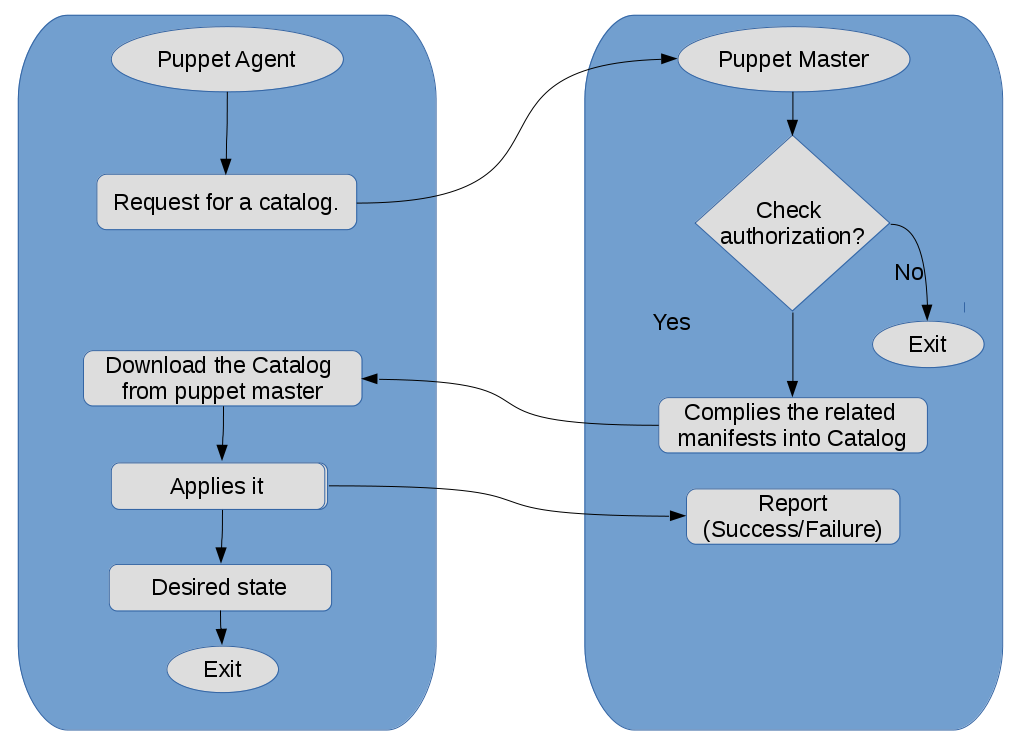Directory environments in Puppet
Environments are individual groups of Puppet agents each environment have there own completely different manifests and module-paths. This basically is useful for testing changes to our Puppet code before implementing them on production machines. There are two types of implementation of environments structure in Puppet one if directory based and another is config file based here we will see bit of an insight about directory based. As usual for more information about this you can visit puppetlabs official website. On the master node: Append following details in puppet.conf which is placed under /etc/puppet or /etc/puppetlabs/puppet: Under [main] section add a variable called confdir with value as /etc/puppet or /etc/puppetlabs/puppet confdir=/etc/puppet Then add information regarding environments/manifests and modulepath in it. #environments environmentpath = $confdir/environments default_manfiest = $confdir/manifests basemodulepath =
